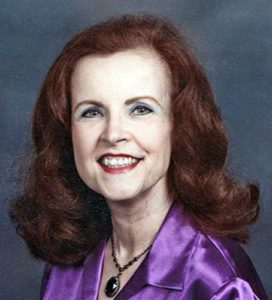BY CAROL BAASS SOWA
TODAY’S CATHOLIC

SAN ANTONIO • Tucked away on a wooded hilltop off Culebra Road, someone is praying for you — eight “someones,” to be exact, Discalced Carmelite nuns from a cloistered, contemplative order founded by St. Teresa of Avila in 1562. They arrived in San Antonio from Mexico in 1934 and previously lived on Kentucky Avenue, near the Basilica of the National Shrine of the Little Flower before their move to St. Joseph Way, just inside Loop 410, in 1983.
Today, they are looking forward to being joined soon by seven more nuns from the New Caney Discalced Carmelite monastery, north of Houston, which will be closing for economic reasons.
“They were originally founded from our community in 1958,” notes Mother Therese Leonard, OCD, San Antonio prioress. “So, some of the sisters who went are coming back. Others joined there in Houston.”

With the number of the local monastery’s residents about to nearly double, there is a pressing need for expanded facilities, leading to an initiative that is not being approached as a typical fundraising campaign, but as a “Carmelite Encounter.”
Drawing on the words of Pope Francis that we need to encounter Christ, it is an opportunity to become acquainted with these sisters who, hidden from the world, lead lives of prayer and sacrifice, uplifting the Archdiocese of San Antonio.
“We are hoping to help bring awareness, bring people to the monastery,” says Teresa Hinojosa, Carmelite Encounter chair. “We want people to meet the sisters, come to the monastery.” Visitors are welcome to attend the daily Masses at the monastery chapel, she adds. They are celebrated Mondays through Saturdays at 7 a.m. and Sundays at 8 a.m.
The Masses are well-attended, notes Mother Therese, with larger attendance on weekends, and regular attendees helping with the altar and serving as Eucharistic ministers. First Communicants from St. Dominic’s Parish have also become regular monastery visitors.
“We’re here to pray for everyone’s needs,” says Sister Corinne Uher, OCD, noting many people call or leave a message for specific prayer intentions, either by phone, e-mail or a note left in the “turn,” a large, rotatable cylinder set into an outer wall of the main building. The device’s use dates back to medieval times when it served as a means of allowing items to be delivered to the cloistered nuns without seeing their faces.
Also, as at the time of their founding, the nuns converse with visitors through a metal grille. “It is a symbol of our life of prayer,” notes Sister Corinne. It is not that the nuns do not want to be part of the world, she explains, but that, in order to help the world spiritually, they need to set up an atmosphere of silence and solitude, which is symbolized by the grille.
Mother Therese adds that they do not keep absolute silence, like some stricter orders, and have two hours of recreation a day, one after lunch and one after supper. “The rest of the day,” she notes, “even though we don’t keep strict silence, we try to keep an atmosphere of silence, only speak when it’s necessary, so that we can remain in this presence of the Lord and pray for whatever needs we need to be praying for.”
“God is with us 24/7,” says Sister Corinne, “and we communicate with him all the time, but amidst our jobs — our work, our daily cleaning, crafts, sewing — whatever it is we’re doing, we’re remembering the needs of our benefactors and friends and church in the world.”
“The spirituality of the nuns is that of St. Thérèse of Lisieux and St. Teresa of Avila,” notes Hinojosa. “They truly are living the charism of the foundress, St. Teresa of Avila. There is so much there for people to come and experience.”
A major source of funds for both monasteries has been the packing and distribution of altar bread, which they will continue in together, but the New Caney nuns will be bringing with them their computerized, four-head embroidery machine, which is hoped to eventually be put to use in San Antonio in the making of vestments and altar linens, as well as for Fiesta and other items. A special room for the embroidery machine is in the plans for the new annex that will accommodate the expanded community.
Architectural plans for the annex by Fisher Heck Architects, with Martin Keller as a contractor, also include a laundry, exercise room, space where hosts will be packed and sent out a room for a monthly day of recollection for each of the nuns, and a garage.
A library, featuring a special painting of Our Lady of Guadalupe, will have a wall dedicated to relics and images the nuns brought with them when they arrived from Mexico in 1934, during a time of religious persecution there. A separate storage building will house the sisters’ yard equipment.
It is hoped that construction can be underway by October. In the meantime, the two Discalced Carmelite communities officially merged into one in June, electing a prioress and councilors, although the New Caney nuns cannot move to San Antonio until their monastery, situated on six evergreen-studded acres in Roman Forest, is sold. They are praying for a buyer.
“We are looking very forward to having the sisters come to be with us,” says Sister Corinne. “We are looking forward to building a new community, building new lives and a new presence here in the archdiocese.”
This article originally appeared in the August 17 issue of Today’s Catholic Newspaper.
#iamTodaysCatholic


